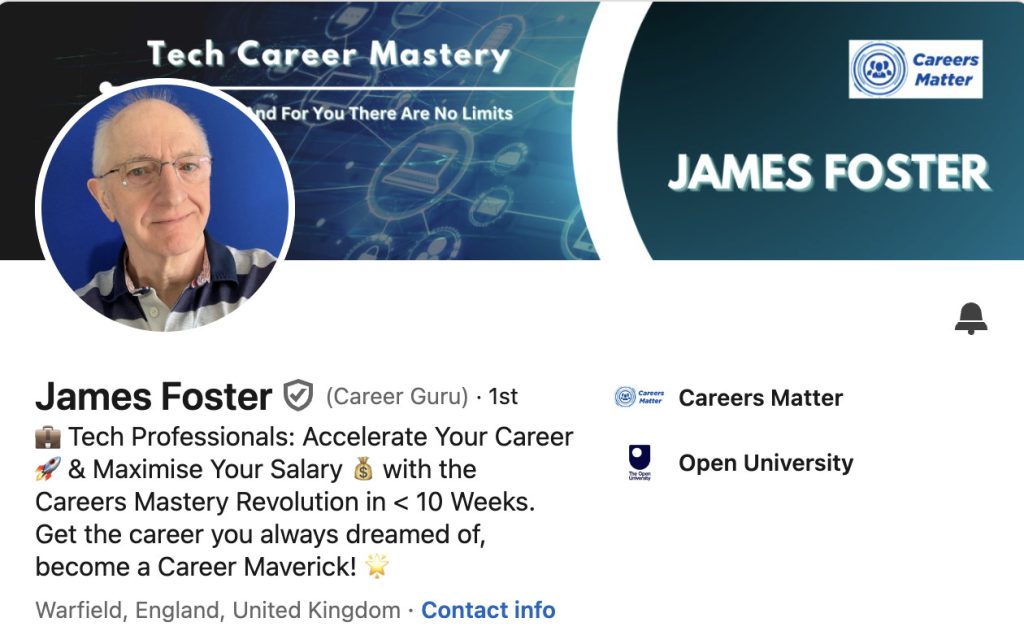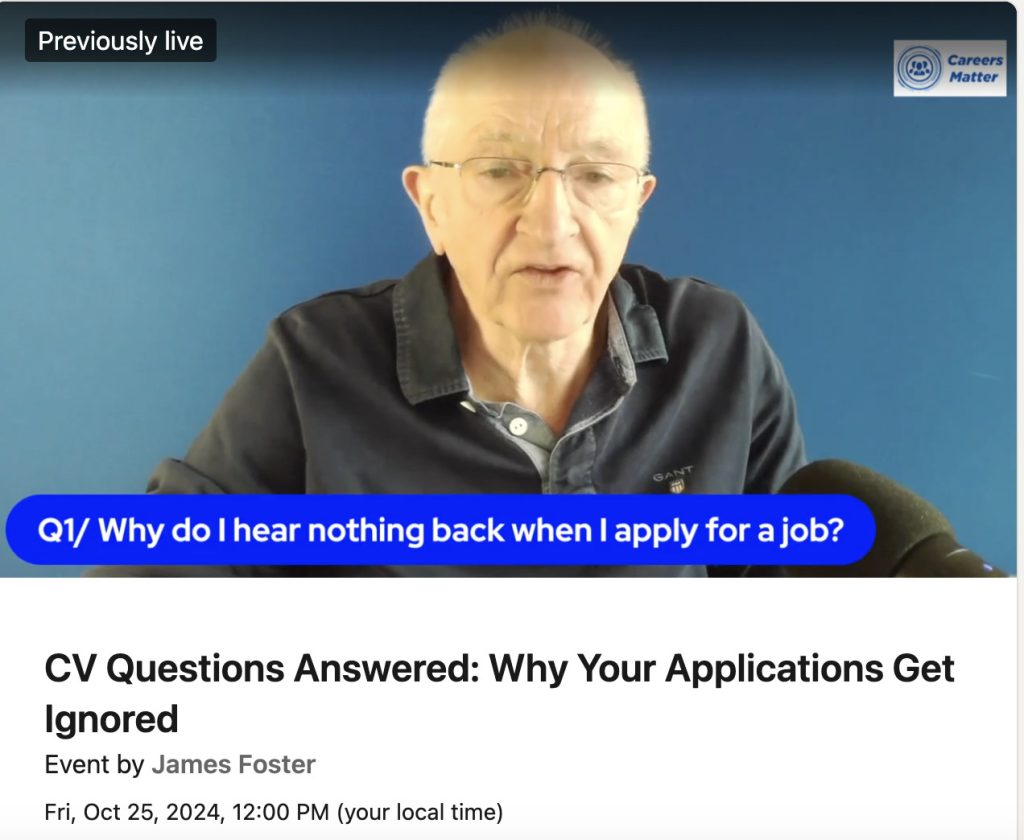How a 3-step successful CV strategy can improve your persuasive sales technique
I’ve done good CVs, bad CVs. I’ve been a good hiring manager, and I’m sure I’ve done a bad job too. I guess that makes me mediocre in 30 years in the biz, but one thing I still believe in is learning and improving… and so I found myself on the career guru James Foster’s (runs Careers Matter) excellent livestream “CV Questions Answered: Why Your Applications Get Ignored“.
But this post isn’t about CVs — this post is about something “meta” I learned in James’s session, and how it applies to marketing and sales.
This is the benefit of listening to someone as experienced as James. They can distill complex topics into abstract concepts that everyone can understand, and sometimes these abstractions work in different parts of the tech industry.
Let me explain.
- Who is James Foster?
- What did James Foster say was the secret to successful CV applications?
- How a CV best practice apply to marketing and sales.
- Step 2 – IMPACT: What are your -> the widget’s outcome/benefits?
- Step 3 – RELEVANT: Why should we care about you -> your widget?
- Put it all together, what do you get?
Who is James Foster?
James is a walking treasure trove of career advice for the tech and cybersecurity industry. He helps the hiring side and the candidate side. He was the host of the “CV Question” livestream, which was great fun. Yes, CVs can be fun! 😜
What did James Foster say was the secret to successful CV applications?
You should really watch the whole livestream and make your own conclusions, but here was my key takeaway:
Write down your achievements, that were impactful, and that are relevant to the job you are applying for — and the hiring manager, and the company where the job is!
James Foster, “CV Questions Livestream”
“But, Steve!” I hear you exclaim. “What the hell has this got to do with sales?!”
I’m glad you asked. 🤗
How a CV best practice apply to marketing and sales.
Instead of YOU being the product on sale — the thing for rent 🤣 — in a CV application hiring situation, for a product or service, we are instead marketing and selling The Widget.
It’s safe to say that potential customers (prospects) do not have a sleepless night, tossing and turning, dreaming of your widget. Nor do they leap out of bed and rush to look at your website, frantically searching for the Buy Now button.
Let’s be honest, they’ve never heard of you 😭. They’ve got other things to do 🥳. You’re not The One Ring and they aren’t The Eye of Sauron 👁️. You have to get their attention, and once you get it you can’t waste the moment.
This is where James Foster’s 3-step approach works:
Step 1 – ACHIEVEMENT: What do you -> does your widget do?
Just like the “What did you achieve?” statements you must include in your CV, you have to do this for your widget.
- What problem/challenge does your widget solve?
Think of a classic Solution Brief that starts with “Headline/Hero”, then has the Problem-Solution 1-2.
On your CV it’s the headline about YOU, and your achievement (problem solved with your application).
For a widget, the headline is about WIDGET, and it’s achievement (problem solved with it’s application).
Your achievements
I successfully identified a problem with our cybersecurity compliance which was causing failed external Red Team audits and risking a regulatory inspection, which we couldn’t fail.
I designed and implemented a solution that could “see” across our whole IT/OT landscape, enabling us to find previously undiscovered gaps in cybersecurity which we could then remediate before audit and inspection.
This was successful because we passed the next Red Team audit and regulatory inspection.
Widget achievements
This widget successful identifies and helps to close IT/OT gaps that create cybersecurity risks.
Without this widget, it’s chance who discovers gaps first: IT/OT or bad actors?
Existing tools “don’t know what they don’t know” and require this “super widget” that integrated with them, and 8 classes of asset (devices, users, software, tickets, and more) to rationalize, normalize, and cross-correlate IT/OT information to be queried and remediated like never before.
Step 2 – IMPACT: What are your -> the widget’s outcome/benefits?
The second part of every Solution Brief I’ve ever written, after the Problem/Solution 1-2 is the Outcome/Benefits 1-2.
In your CV, this is the needle you moved and how far it moved. For example, if you wrote a brilliant 60-page report that nobody read then that’s not an achievement. Neither is spending 20-hours a week in meetings “enabling others” if you aren’t incentivised/rewarded/measured for the outcomes of that enablement. “We” on a CV is like “But” before a statement: everything after is ignore.
For a widget, the impact is outcome and benefit: what needle did your widget move? For example:
- OUTCOME — Improved Red Audit success from repeated failures to repeated success.
- BENEFITS — Improved Board (Risk Management and Compliance) confidence in IT/OT; Drastically reduced cost, time, and effort through preventative maintenance which avoids expensive unplanned and disruptive remediations.
Your impact
My program prevented failed Red Team audits and regulatory inspections — which we *couldn’t* fail because of the serious implications — which avoided reputational harm and brand damage. We also drastically reduce the impact of unplanned remediation in measurable costs, time, and effort.
The remediation also distracted our revenue-generating technical teams from their projects which had a drag on future revenue.
So we avoided the triple-whammy of (a) failure now, (b) costs next, and (c) less revenue next year.
Widget impact
Companies use this widget in response to a wide variety of compelling events. From new CxO hire, to mergers and acquisitions. In cloud migrations and repatriations. And in everyday cybersecurity proactive “level up” improvement programs, or more reactive “compliance remediation” projects.
That means this widget impacts more than one program in any company, delivering multiple returns on investment.
The best measure of this widget is when we ask a customer if we should turn it off after a pilot, “DON’T YOU DARE”.
Step 3 – RELEVANT: Why should we care about you -> your widget?
A fascinating point that James made on the CV Questions live stream was how to make you and your CV relevant. But this isn’t just relevant to the job specification, his point was larger: it’s about being relevant to the hiring manager and the company behind the job. Same with sales.
To make your CV relevant, understand the people and the company behind it. What makes them take? What are they famous for (their brand is what people say about them when they’re not in the room)? What do they say online? What recent successes have they had? Public failures? Adjust your CV, covering letter, and whole approach. Find the hiring manager if you can. Speak to them. Empathise with them.
Same for sales. Your widget might not be a human like you, but the people you want to market and sell to most certainly are human. Why should they care about your widget? Your problem, solution, outcome, and benefits **ARE NOT ENOUGH**. So what can you do?
I have three techniques here for you: use cases (or “situations”, or “compelling events”); case studies or customer stories; and testimonials from people your audience respects.
- Use cases / compelling events are stories you can tell about situations that are relevent in the scope of the job, team, and company you are applying for. These are war stories that will land with your audience. These are ways to communicate your experience. How you add the flesh to the skeleton bones that is your CV.
- Case studies / Customer stories always include things like industry vertical perspective (which arena are you in?), company background (which side were you on?), and why/what/how (details of the battle).
- Testimonials are badges of honour where people with experience of you or your widget have something good to say about you. Find, cultivate, and wear these with pride.
Your relevance
I read in The Stack that Acme Corp had a difficult experience with a security breach and that the CEO had publicly stated that he was sorry, it was unacceptable, and significant investment has been budgeted and a significant and transformative program is underway.
The team that owns this job opening is a pivotal part of the transformation and I feel passionate about being part of that transformation, because I enjoyed my previous related achievement and want the buzz of making that impact again.
I think this role has the potential to let me contribute positively to something that the company cares deeply about.
Widget relevance
An existing customer, Acme Corp, shared their story in a case study, about how they used our widget in the energy industry to help them in the acquisition of a company. They needed to understand the acquired company’s IT/OT and cybersecurity so they could merge efficiently, and successfully, which meant non-disruptively to the OT business (which attracts huge penalties).
They explained the widget’s successful role in their compelling event (M&A) and the 14 specific use cases.
Their CIO gave a personal testimonial to the impact our widget had on his, his team’s, and his merger program’s success.
Put it all together, what do you get?
If I was doing marketing and sales for a widget — whether it was a product or a service — I would do the achievement -> impact -> relevance path. This is a kind of simple positioning.
The way you position yourself with a CV in a job application process is similar to how you would market and sell a widget.
Equally, how you market and sell a widget is similar to how you should market and sell yourself with your CV: do you have an elevator pitch? If not, create one now using the 3-step achievement, impact, relevance formula.
What do you think? I’d love to hear from you — +ve or -ve, I’m always keen to learn from and share with others.



